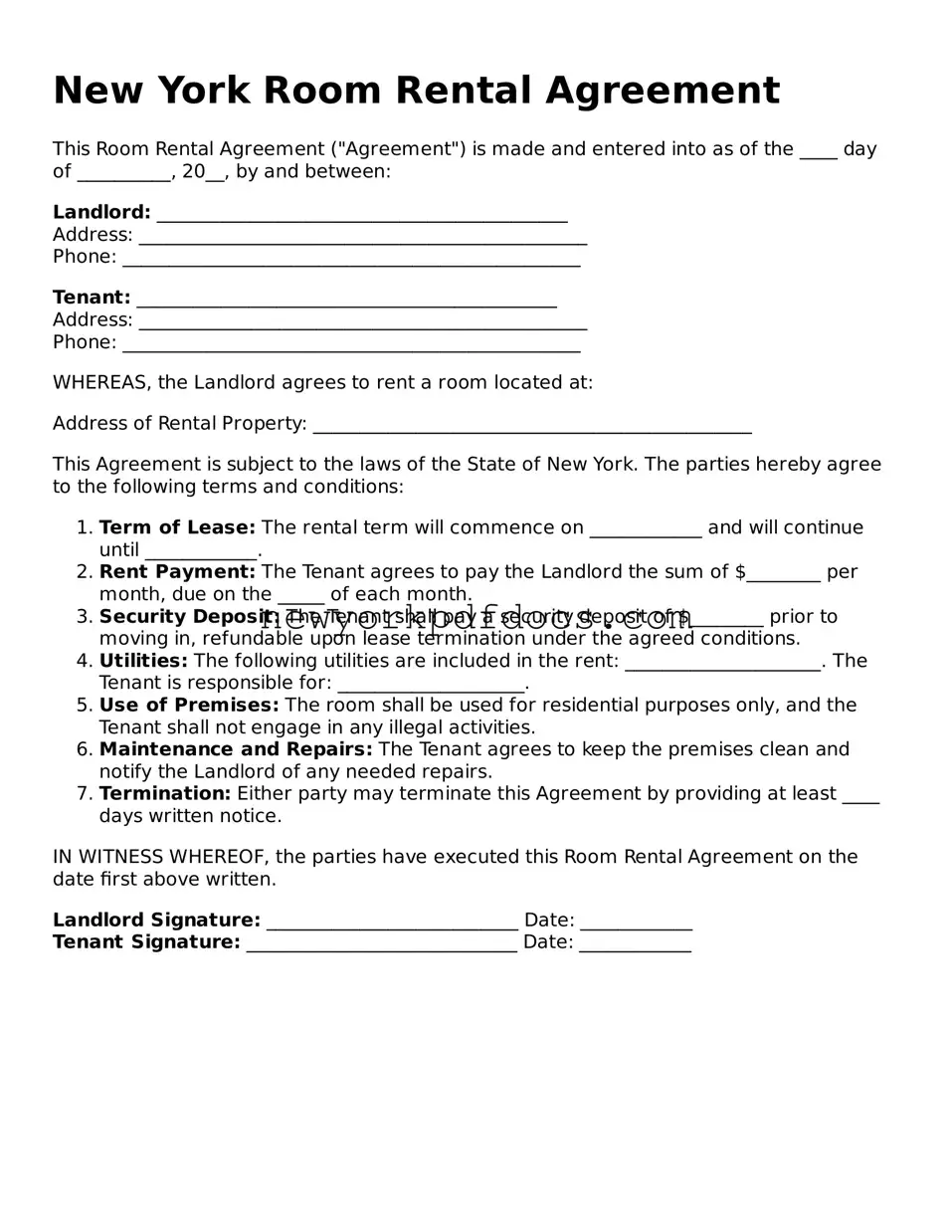New York Room Rental Agreement
This Room Rental Agreement ("Agreement") is made and entered into as of the ____ day of __________, 20__, by and between:
Landlord: ____________________________________________
Address: ________________________________________________
Phone: _________________________________________________
Tenant: _____________________________________________
Address: ________________________________________________
Phone: _________________________________________________
WHEREAS, the Landlord agrees to rent a room located at:
Address of Rental Property: _______________________________________________
This Agreement is subject to the laws of the State of New York. The parties hereby agree to the following terms and conditions:
- Term of Lease: The rental term will commence on ____________ and will continue until ____________.
- Rent Payment: The Tenant agrees to pay the Landlord the sum of $________ per month, due on the _____ of each month.
- Security Deposit: The Tenant shall pay a security deposit of $________ prior to moving in, refundable upon lease termination under the agreed conditions.
- Utilities: The following utilities are included in the rent: _____________________. The Tenant is responsible for: ____________________.
- Use of Premises: The room shall be used for residential purposes only, and the Tenant shall not engage in any illegal activities.
- Maintenance and Repairs: The Tenant agrees to keep the premises clean and notify the Landlord of any needed repairs.
- Termination: Either party may terminate this Agreement by providing at least ____ days written notice.
IN WITNESS WHEREOF, the parties have executed this Room Rental Agreement on the date first above written.
Landlord Signature: ___________________________ Date: ____________
Tenant Signature: _____________________________ Date: ____________
